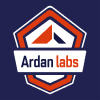December 12, 2022
Ardan Labs
From the Ardan Community
Introduction In this video, Bill will introduce the concepts of what a blockchain is, the benefits of a blockchain, and the network environment it operates in. Bill describes a blockchain as a single, append-only, transparent, publicly available and cryptographically auditable database. Blockchains operate using a peer to peer (p2p) network with no single node designated as the central authority.
To better understand what all that means, Bill begins to work through a familiar problem of creating reproducible, durable, and secure builds that software teams face.
Continue reading Introduction A blockchain is an integrated solution of different computer science problems in the form of a single, append-only, publicly available, transparent, and cryptographically auditable database that runs in a distributed and decentralized environment.
I’ve heard many times that blockchain is a technology looking for a problem to solve. I disagree with that assessment because the tech and computer science behind blockchain has practical uses in everyday engineering problems. One use of this technology that comes to mind is a dependency management verification system.
Continue readingIntroduction In the first three posts, I explained there were four aspects of a blockchain that this series would explore with a backing implementation provided by the Ardan blockchain project.
Digital accounts with electronic signatures and verification Transaction distribution and synchronization between computers Redundant storage and consensus by different computers Detection of any fraud to past transactions The first post focused on how the Ardan blockchain provides support for digital accounts, signatures, and verification.
Continue readingIntroduction In the first two posts, I explained there were four aspects of a blockchain that this series would explore with a backing implementation provided by the Ardan blockchain project.
Digital accounts with electronic signatures and verification Transaction distribution and synchronization between computers Redundant storage and consensus by different computers Detection of any fraud to past transactions The first post focused on how the Ardan blockchain provides support for digital accounts, signatures, and verification.
Continue readingIntroduction In the first post, I explained there were four aspects of a blockchain that this series would explore with a backing implementation provided by the Ardan blockchain project.
Digital accounts with electronic signatures and verification Transaction distribution and synchronization between computers Redundant storage and consensus by different computers Detection of any fraud to past transactions The first post focused on how the Ardan blockchain provides support for digital accounts, signatures, and verification.
Continue readingIntroduction This is the first post in a series that will explore the semantics and implementation details of the Ardan blockchain project. The code is a reference implementation of a blockchain and not intended to mirror any specific blockchain in use today. Even though the code has been engineered with production level coding standards, I wouldn’t use this project for anything more than learning.
I am using the Ethereum project as a reference and have taken inspiration from that code.
Continue readingIntroduction You’d like to visualize some stock data using Go, but after looking at the Go ecosystem you see very little in charting. You find gonum, which has some plotting capabilities, but it generates static charts. It’s 2022, and you’d like to have interactive features such as zooming, panning, and more. You turn to the HTML landscape, and see many more options and decide to take this path. After a short survey, you decide to use plotly.
Continue readingIntroduction You are jogging and want to show off your route to your friends. Let’s imagine the data you have for your route is a CSV file in the following format:
Listing 1: track.csv
time,lat,lng,height 2015-08-20 03:48:07.235,32.519585,35.015021,136.1999969482422 2015-08-20 03:48:24.734,32.519606,35.014954,126.5999984741211 2015-08-20 03:48:25.660,32.519612,35.014871,123.0 2015-08-20 03:48:26.819,32.519654,35.014824,120.5 2015-08-20 03:48:27.828,32.519689,35.014776,118.9000015258789 2015-08-20 03:48:29.720,32.519691,35.014704,119.9000015258789 2015-08-20 03:48:30.669,32.519734,35.014657,120.9000015258789 Listing 1 shows the first few lines of track.csv. Each line contains a time stamp in UTC, latitude, longitude and height above sea level in meters.
Continue readingIntroduction You are about to visit Boston, and would like to taste some good food. You ask your friend who lives there what are good places to eat. They reply with “Everything is good, you can’t go wrong”. Which makes you think, maybe I should check where not to eat.
The data geek in you arises, and you find out that the city of Boson has a dataset of food violations.
Continue readingThe Question When you work on data science problems, you always start with a question you’re trying to answer. This question will affect the data you pick, your exploration process, and how you interpret the results.
The question for this article is: How much (in percentage) should you tip your taxi driver?
To answer the question, we’ll use a portion of the NYC Taxi dataset. The data file we’ll be using is taxi-01-2020-sample.
Continue reading